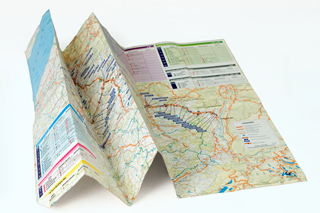

The explosion at a fertilizer plant in Texas this week killed several people and injured many more. It brought to mind the “threat map” disaster expert Paul Purcell details in his book, Disaster Prep 101. (Look for a full review of the book soon.)
A threat map is something you create at home. It details potentially hazardous sites, like a fertilizer plant, should a disaster strike. Using readily available maps at places like Google Maps and Mapquest, the idea is to best assess where not to travel during an evacuation.
The following lists are from Disaster Prep 101. This is just a brief overview. The book contains a lot more detail on these subjects.
Maps to Gather to Create Your Threat Map
Street maps
Aerial photos of your workplace, children's schools and your home
A city map
A county map
A state map
A national atlas
Start Making Your Threat Map
On each of the maps, mark the following things:
Potential targets of terrorist attacks
Prevailing wind directions – You'll need this determine where to go if toxic chemicals are in the air. In the case of the fertilizer plant explosion, it would be a good idea to stay upwind.
Chemical, hazardous materials and nuclear sites
High-crime areas
Transportation bottlenecks
Flood plains
Any other hazard relevant to your area
From rolling blackouts to hurricanes, floods to tornadoes, power can go out at a moment's notice. If the grid fails, the PowerPot will keep you charging! The PowerPot thermoelectric generator converts any heat source directly into power that charges your USB handheld devices. Get Yours Now


![Best Concealed Carry Guns In 2025 [Field Tested] Wilson Combat EDC X9S 1](https://gundigest.com/wp-content/uploads/Wilson-Combat-EDC-X9S-1-324x160.jpg)


![Best 9mm Carbine: Affordable PCCs [Tested] Ruger Carbine Shooting](https://gundigest.com/wp-content/uploads/Ruger-Carbine-Shooting-100x70.jpg)
![Best AR-15: Top Options Available Today [Field Tested] Harrington and Richardson PSA XM177E2 feature](https://gundigest.com/wp-content/uploads/Harrington-and-Richardson-PSA-XM177E2-feature-100x70.jpg)
